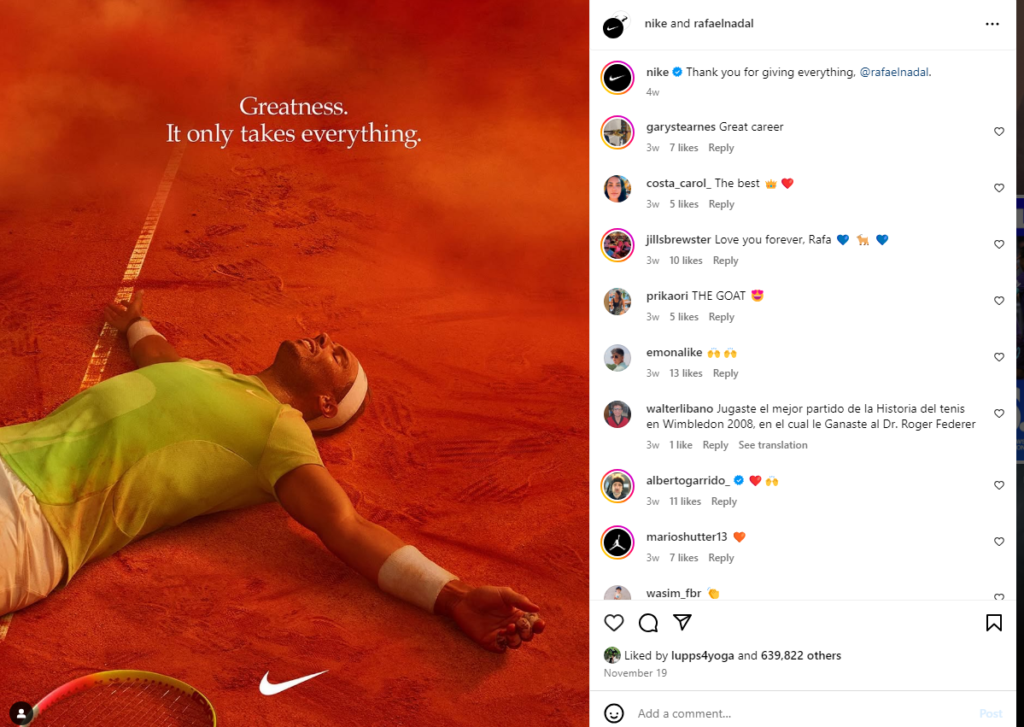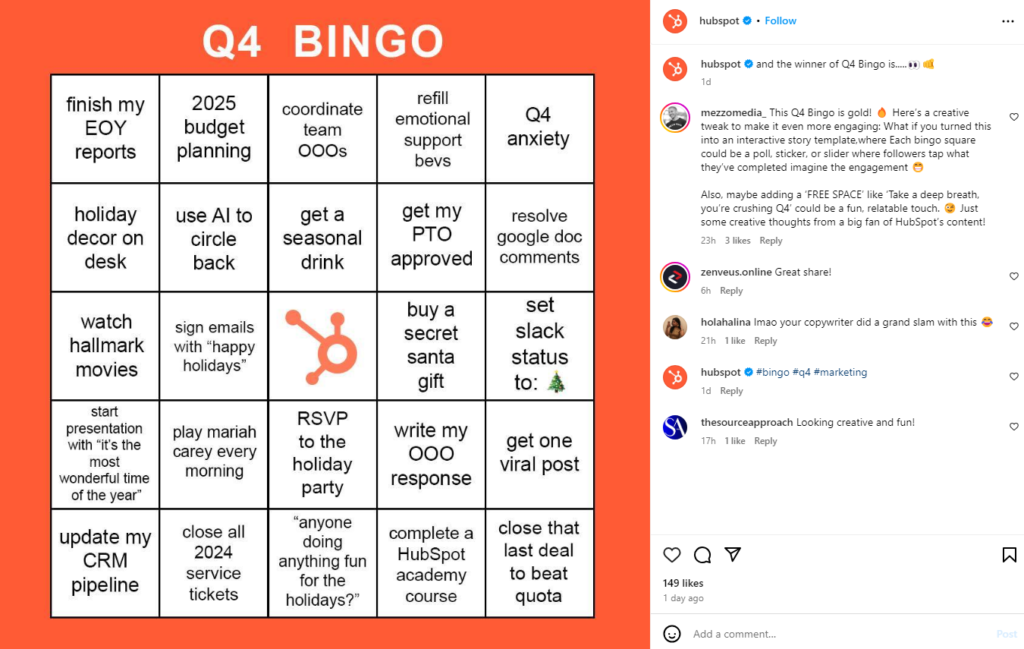6 Iconic Tone of Voice Examples Every Brand Can Learn From
Have you ever wondered why some brands seem to have a lot of pizzazz and sparkle, while others just fade into the noise? A lot of factors affect your ability to stand out online, but it’s tough to shine without an engaging brand voice.
Tone of voice (TOV) is the personality behind all of your brand messaging. Instead of sounding like a Charlie Brown character where all people hear is “Wah wah wah,” you’ll give people a reason to stick around and actually hear what you have to say.
Your tone of voice is the manifestation of your brand identity. In a market full of copycats and competitors vying for your customers’ attention, TOV is a surprisingly helpful way to put the spotlight back where it belongs: on you!
However, it takes hard work to create your own tone of voice, much less stick with it over time. In this guide, we’ll explain why brand voice is so important, share our favorite tone of voice examples to get you started, and share a few helpful tips for having a consistent tone of voice.
What Is Tone of Voice and Why Does It Matter?
Tone of voice is how a brand communicates its values, identity, and personality, both internally and externally. Brands that do it right have a consistent tone of voice across all communication channels, from social media to their website. What you say matters, but with tone of voice, the focus is on how you say it.
By establishing the right tone (and sticking with it consistently), your messaging is more likely to resonate with your target audience. For example, there’s a big difference between how a reputable bank communicates versus how a quirky startup positions itself. These brands have different goals, audiences, and approaches, so it makes sense that their communication styles will be different, too.
Tone of voice matters for so many reasons, including:
- Competition-proof your brand: Sure, other people can try to copy your products or poach your employees, but it’s really hard to copy tone of voice. If you need an edge in a competitive space, choosing a unique tone of voice could be what you need to stand out.
- Streamline content creation: Don’t agonize over word choice. A well-crafted brand tone of voice helps you stay consistent at all stages of the content marketing process, from writing social media content to filming videos for YouTube.
- Foster audience trust: Your customers want consistency. If you’re weirdly formal one day and super casual the next, they’re going to feel like your brand doesn’t have a clear vision. Build trust by showing you have a strong brand with a very clear message and purpose.
- Emotional connections: There’s a reason why people have such a strong attachment to the Duolingo owl. The brand’s tone of voice encourages strong emotional connections with its customers, keeping the company top-of-mind (and hopefully reminding folks to log into the app daily). A unique tone of voice like this makes it easier for shoppers to see you as a collection of real humans, not a faceless conglomerate.
Tone of voice encompasses everything from word choice to your brand values. The hardest part is nailing your brand personality, but once you do that, you’ll be well on your way to crafting a unique brand voice that engages.
Our 6 Favorite Tone of Voice Examples
The best way to learn about brand voice is to see tone of voice examples. Check out these noticeably different tones from some of the world’s most-loved brands.
Nike

Nike’s tone of voice is all about being motivating and empowering, aligning perfectly with its iconic tagline: “Just Do It.” Nike’s consistent, uplifting messaging reflects its core values of perseverance and inclusivity. This brand tone of voice encourages customers to push past their limits and embrace their inner athlete, no matter their skill level.
Hermès

Hermès takes a refined yet informative tone to convey sophistication and exclusivity. Its communication style reinforces the brand’s reputation for high craftsmanship and luxury. Hermès uses elegant phrasing and a formal tone that appeals to its discerning clientele.
Mailchimp

Mailchimp is known for its lighthearted and conversational tone that makes technical subjects like email marketing more approachable. Its quirky yet informative content strategy sets MailChimp apart as a brand that understands the challenges of its target audience while keeping things fun.
Slack

Slack has a unique tone of voice that’s casual, collaborative, and approachable. Designed for workplace communication, its content creation balances humor with professionalism, making it relatable for its audience of white-collar teams and B2B businesses.
Skittles

Skittles is, uh, definitely unique. It’s the king of quirky and irreverent branding, using an absurd and sometimes surreal tone of voice to captivate its customers. Known for its bold and colorful campaigns, Skittles delivers offbeat humor and an element of surprise, often employing a lighthearted tone that showcases its unique personality. This approach isn’t a fit for all brands, but it certainly earned Skittles a lot of attention.
HubSpot

In this tone of voice example, HubSpot’s brand identity is both informative and approachable. HubSpot’s tone of voice is grounded in empowerment and education, designed to guide its target audience through their marketing and sales journeys. While it doesn’t have a formal tone, HubSpot is definitely more serious than brands like Skittles. HubSpot ensures that its content is both accessible and actionable, aligning with its core values of growth and support.
Tips for Maintaining a Consistent Tone of Voice
Choosing a tone of voice for your brand isn’t that hard—the challenge is in the implementation. It takes time for your team to get used to a new tone of voice, but you can ease the transition by following these tips for maintaining a consistent brand tone.
Define Your Target Audience
The preferences of your target audience have a huge impact on your tone of voice. After all, if your target audience is laid-back college students, an uber-formal brand voice would seem pretty weird.
The first rule of content marketing is understanding your audience, which helps you tailor brand messaging so it aligns with your audience’s expectations. If you’re ever unsure about your tone of voice, ask yourself, “Would my audience think this is consistent with my brand?”
Create Tone of Voice Guidelines
The best way to stick with a consistent tone of voice is to create clear tone of voice guidelines for your team. Think of this as a blueprint for all brand messaging, including granular tips on word choice and even punctuation.
Include specific examples of the different tones that your brand uses. That might mean being lighthearted and casual on social media posts but being more buttoned-up when writing case studies.
While it’s important to be thorough, keep your brand guidelines as skimmable as possible. You want employees to treat this as a helpful checklist, not an eye-rolling novel. Make sure everyone has access to it, too. A well-documented voice guide ensures every person in your organization, whether they’re in marketing or IT, knows how to represent your brand identity.
Work With an Experienced Agency
Writing emails, blogs, social posts, and white papers takes a lot of effort. Artfully weaving in your tone of voice is no piece of cake, either. Fortunately, you don’t have to do everything yourself. Collaborating with an experienced agency like Growth Machine is a game-changer.
Our team not only helps brands create a unique tone of voice that aligns with their core values, but we also help them execute that content strategy. Put your marketing efforts on Easy Mode without worrying about brand safety—Growth Machine’s content marketing pros have your back. See how we boosted blog traffic for a recent client by more than 200%.
Follow Quality Control Processes
Look, mistakes can happen, especially if you create content in-house. Your team will probably use the wrong phrase here or there. Still, brand consistency is a big deal, so you don’t want these slip-ups to happen that often. If it’s time to get serious about your tone of voice, create a system of checks and balances.
Ask employees to check each other’s content before it goes live, reviewing everything to ensure it matches your tone of voice guidelines. If you don’t have the time or staff for additional reviews, try automation tools. Many AI platforms can analyze your content and highlight any areas with different tones of voice.
Organize All Marketing Collateral
Like most businesses, you probably have a treasure trove of logo files, graphics, and videos. It’s crucial to clean house when you update your tone of voice. The last thing you want is for the marketing team to share outdated messaging that doesn’t align with the new brand strategy.
Sift through all of your files and remove the team’s access to outdated messaging. You can always archive this information so you have it later. Create clear, shared folders with the proper assets so your team sticks with the right message every time.
Build Better Style Guides With Growth Machine
Every person on the planet has a personality—your brand should have one, too. That’s the key to meaningful differentiation, giving consumers in even the most crowded niches a reason to choose you over everyone else.
While this guide has some helpful tone of voice examples to get your creative juices flowing, implementation is just as important. Consistency is key, but between managing your business and having, y’know, a life, it’s tough for business owners to ensure TOV consistency.That’s where we come in. Trust Growth Machine’s SEO and marketing aficionados to craft your tone of voice guidelines and implement them with ease. It’s the closest thing to cloning yourself. Contact Growth Machine to make a splash with your brand.







